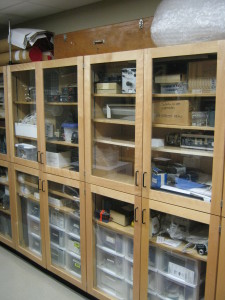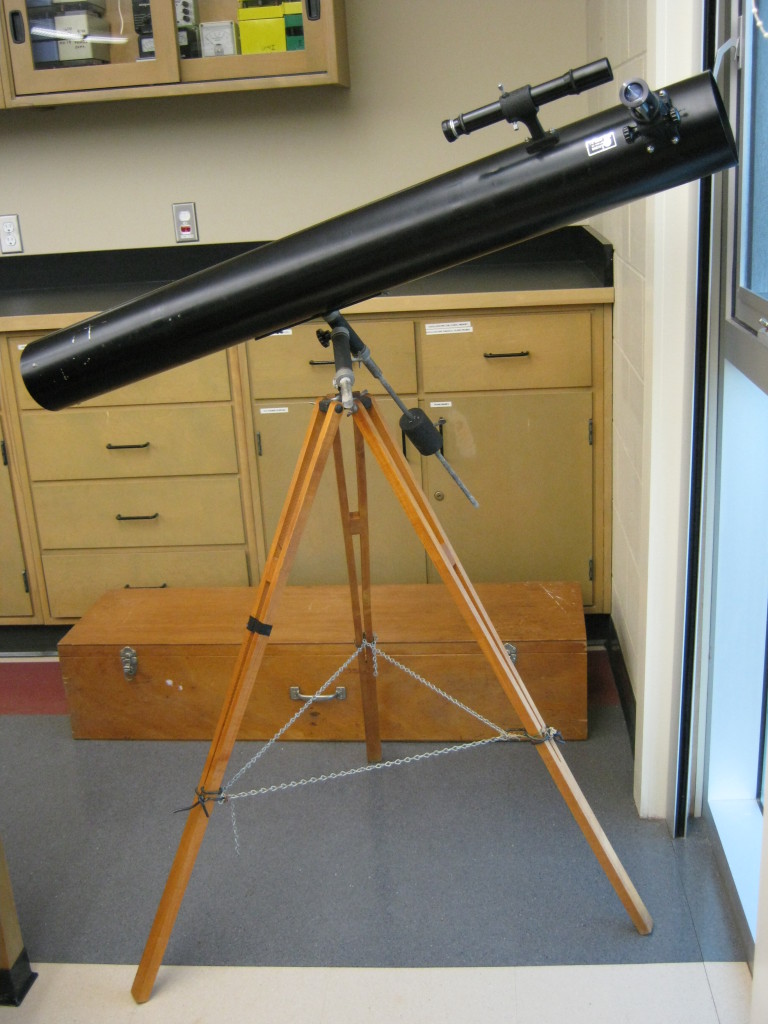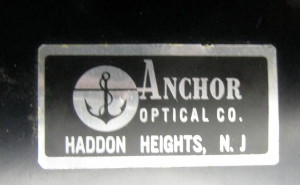What happens when the laboratory technicians are assessing the equipment in the physics storeroom and notice a long wooden box on the top shelf? 
They open up the box and find a telescope.
 It may seem strange to not know that we had this telescope, but a combination of changing astronomy instructors with a departmental move (that causes equipment to end up in new unknown locations) can result in an item getting forgotten.
It may seem strange to not know that we had this telescope, but a combination of changing astronomy instructors with a departmental move (that causes equipment to end up in new unknown locations) can result in an item getting forgotten.
This telescope is a 6-inch Newtonian reflector. I’m not sure how old it is – it sort of has a ’70s look to me. Perhaps this was the first telescope that UPEI Physics had in the 1970s, when observations took place on the roof of the Duffy building. It does have homemade replacement dust covers, which would fit with the story of how the original dust covers blew off the roof during a windy observation session.
The telescope was made by Anchor Optical Co. which now seems to exist as Anchor Optics (a division of Edmund Optics) that makes specialized lenses for research and educational applications.
Given the telescope’s size, it should be great for field work. We have material to build a solar filter, so this will probably also become our solar telescope.










